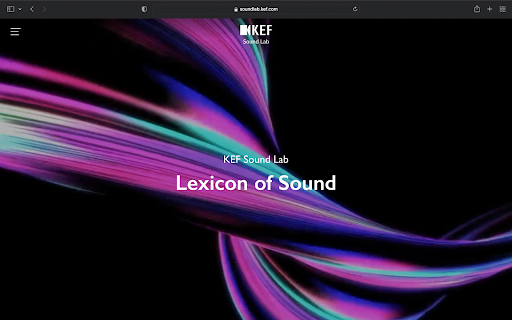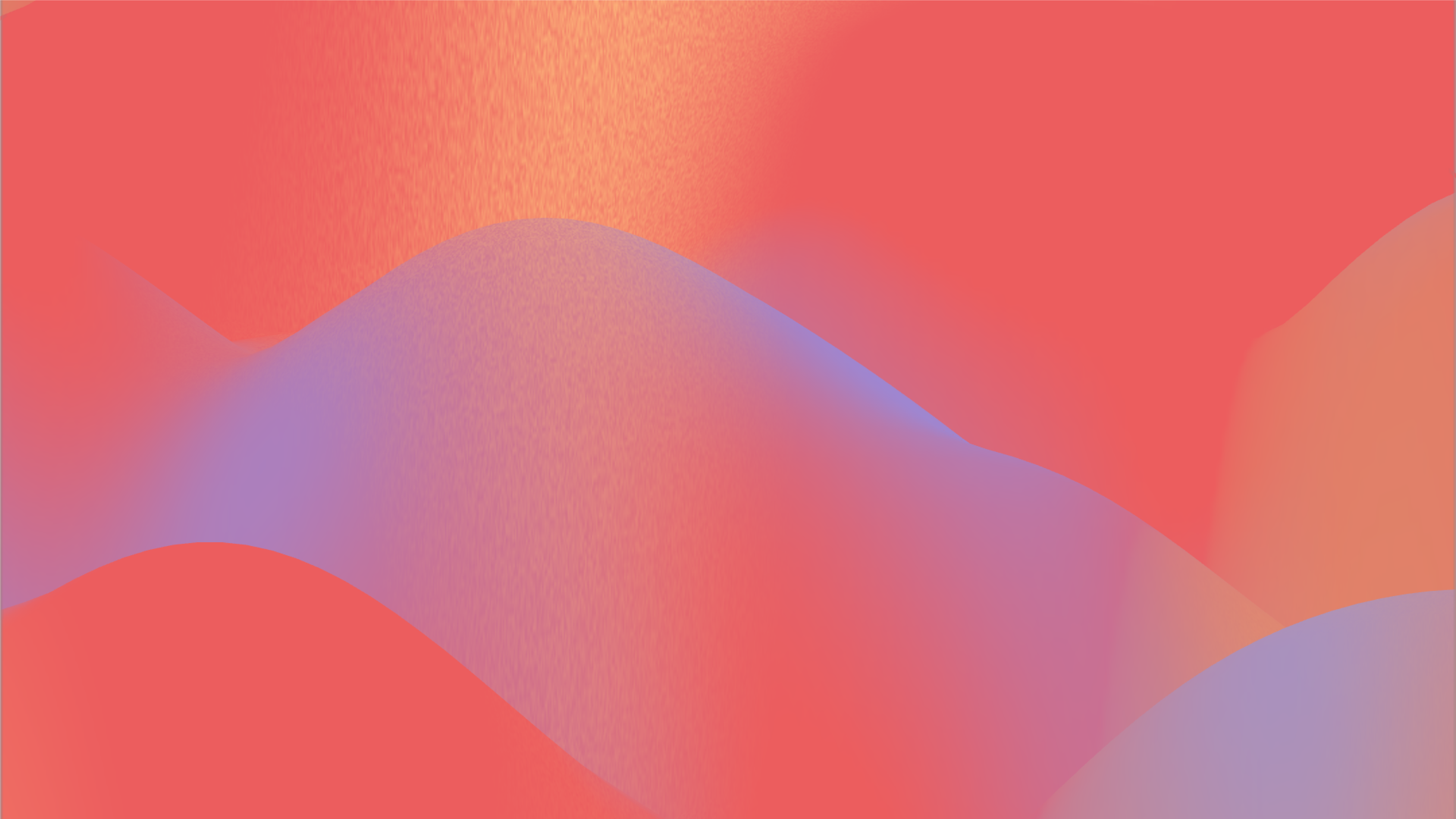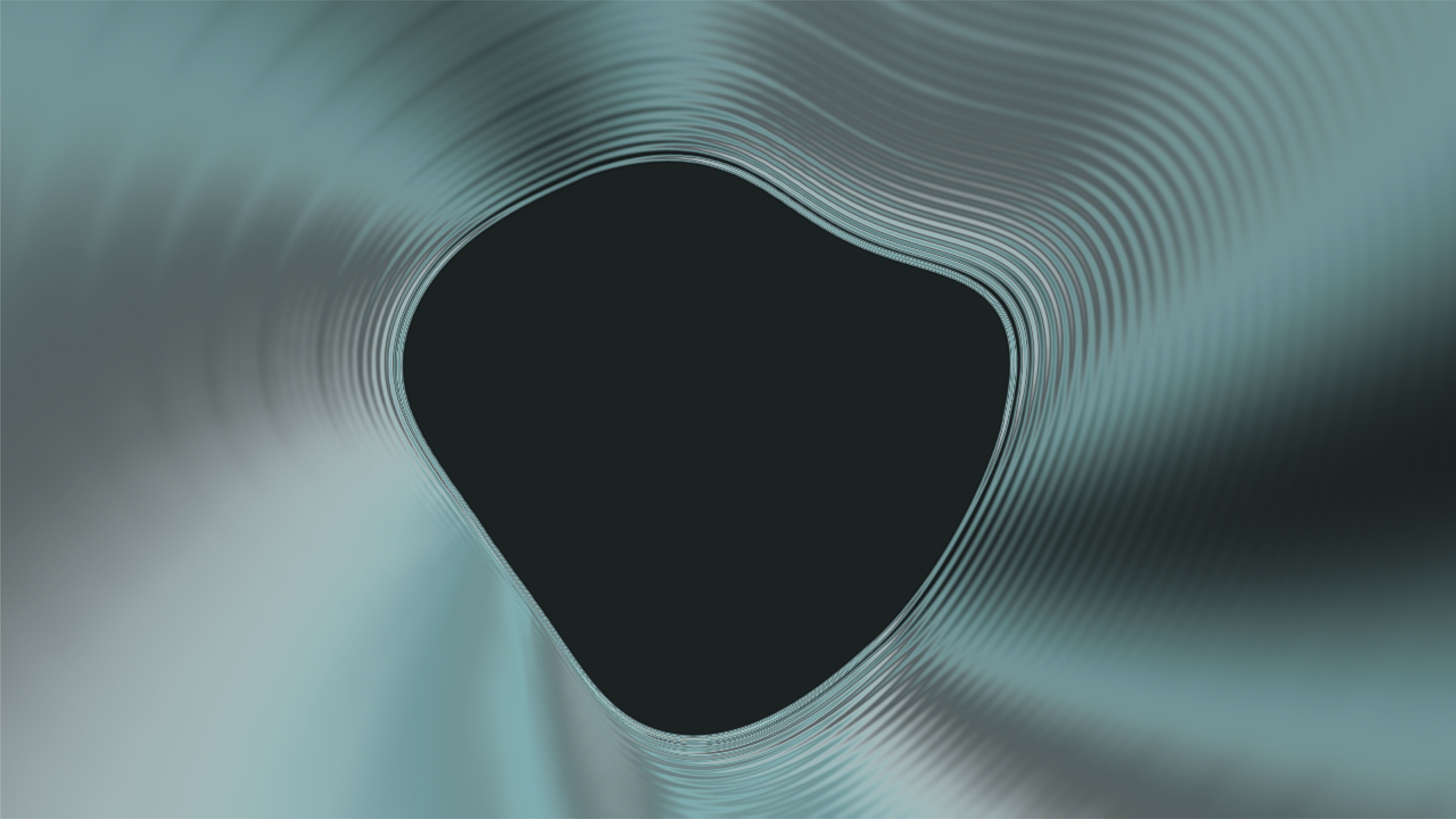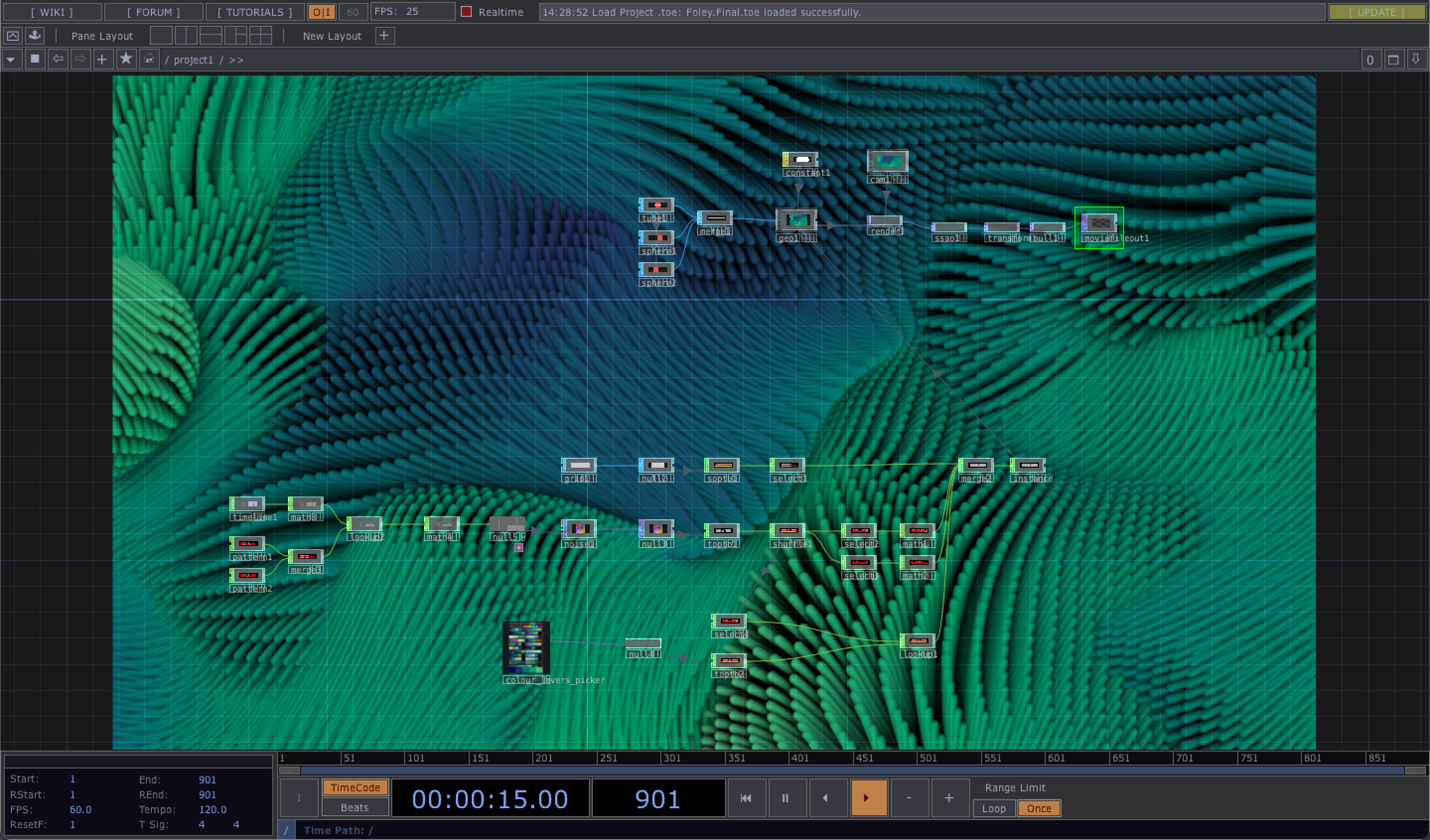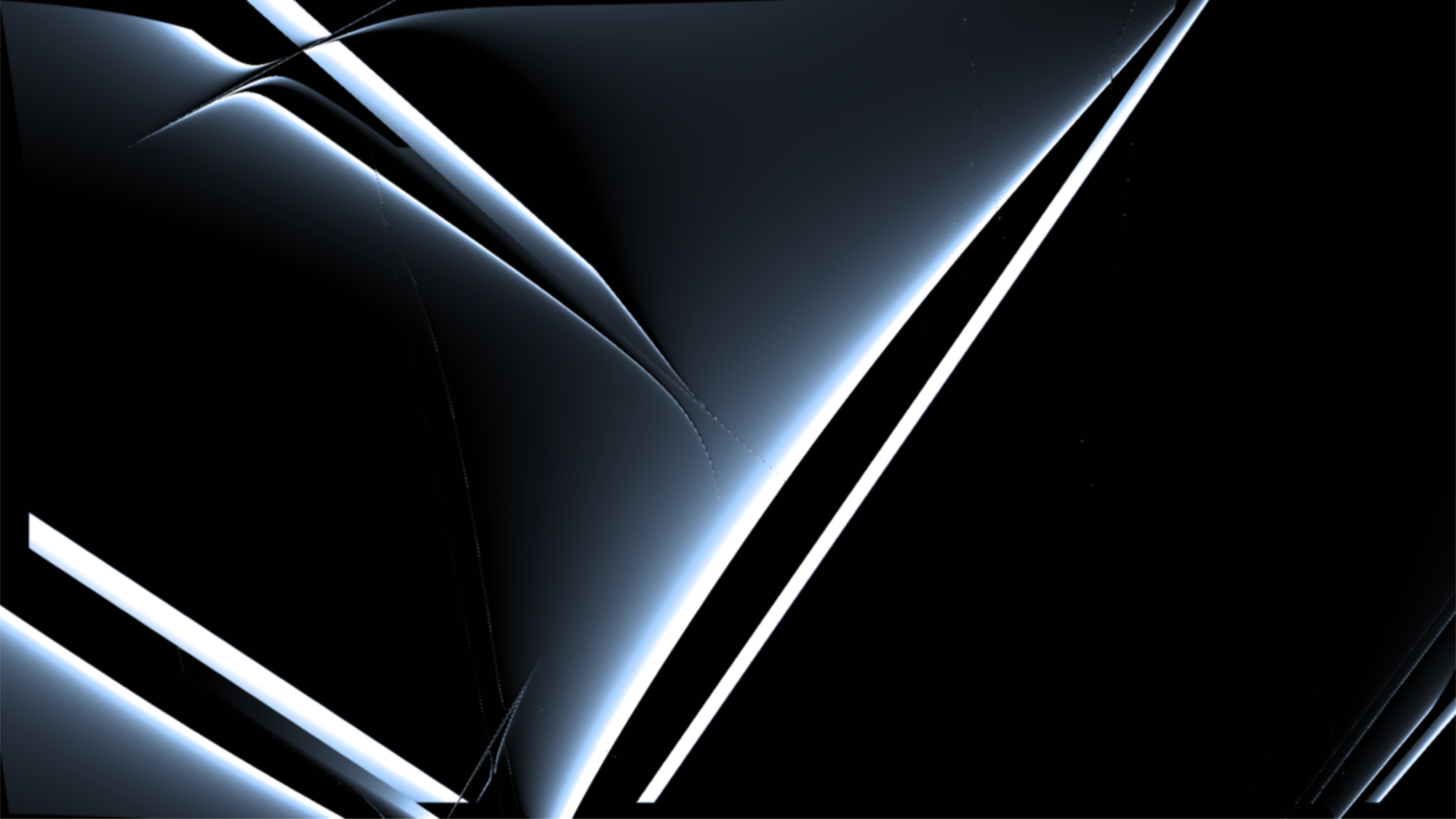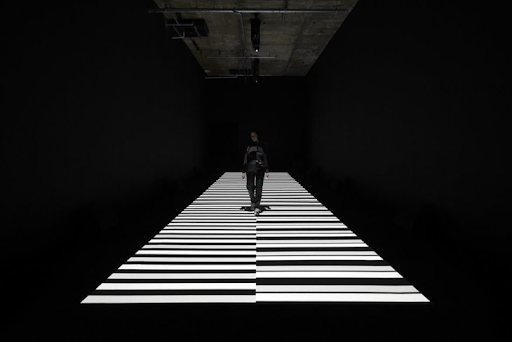Recently we had the opportunity to work with KEF, renowned makers of luxury speakers and sound systems, on a content series for their online platforms Sound of Life and Sound Lab.
Working on the design team for the project involved thinking a lot about the connection between sound and visuals. By the time we delivered, my interest in sound as a medium had deepended and it made me want to explore sound more in my practice as a designer. I realised thinking around sound can be a useful lens for all kinds of design practice and all kinds of creative work.
Here are some things I’ve learned about the power of sound to inform and strengthen design.
KEF Lexicon of Sound
One of the key content strands we developed for KEF was Lexicon of Sound, a written history of sound terms, designed for KEF’s audience of audio connoisseurs. As part of the project, we asked ourselves: how can we illustrate these terms visually, to draw people into the project and compliment the writing?
As a music fanatic and self proclaimed ‘bedroom beat maker’ hobbyist I was thrilled at the prospect. Nevertheless, it was a daunting challenge, especially since some of the words had no visual connotations whatsoever. Like foley – how do you even visualise that?
So, like with any project, we try to make connections. What colours, visual elements, textures and movements could I pair with each of the words? Of course, this can be subjective, but most of the words had a strong vibe that could be translated into something that made visual sense.
It was all about feeling. Creating something emotive, something that looks and feels like the word, no matter how abstract it got visually. We also wanted to create visuals that had variety and character but also looked good as a set. This in turn created an interesting visual language that we couldn’t have predicted.
Throughout the process, we explored the idea of using sound to inform design choices. Thinking about how words like reverb made things sound and what words could be used to describe that feeling strengthened the concepts for each visual.
At times it felt like I was making music, breaking down words like I do with samples, then finding the right colour, texture and forms. Like finding the right kick, snare and hats for your drums and piecing everything together to make something cohesive that evokes the feeling you’re trying to communicate.
For the project we used TouchDesigner, a ‘node based visual programming language software’, great for creating generative visual work. Unlike programs such as Adobe Illustrator you do not directly create the work but instead, build a system of connected operators that generate the work for you. Inside each operator you can tweak parameters until you find something that works for you.
This tends to yield interesting results that you sometimes don’t expect. This freed me in a way and allowed me to get quite experimental. I would play with multiple parameters just to see what would happen. That’s the beauty of making generative visuals: it gives you a feeling of intrigue and adventure where you want to explore all possibilities until you can’t no more. This was paramount while working on the visuals because we had to push it until we had something that not only illustrated sound, but captured what each article was about.
Sound in design
The work on KEF’s Lexicon made me think about the connection between sound and design.
Sound is an integral part of the human experience. It’s one of the five kinds of input we receive that allows us to interact with one another and the world around us. It’s pretty much our central mode of communication. We see music as a universal language that we can all understand, and relate to.
I find it interesting how so many designers I know, or have met, point toward their love of music as their first taste of design. You often hear stories of their humble beginnings making album artwork or record label identities long before they had ever even heard of the phrase graphic design – I know I was.
Sometimes I like to think designers are similar to musicians. We care about telling stories, developing a narrative and making something emotive – taking loose elements and turning them into something cohesive.
Using sound as a route to feeling and emotion in our work with KEF is one example. The huge role sound can play in experiential work is another. Usually, when crafting an experience, you will be informed by emotion or design theory. But sound can and should have an influence too - having an understanding of the audible aspect of the design experience will instantly make it better and stronger. The recent exhibition by Ryoji Ikeda at 180 The Strand demonstrates this concept well, where the audio aspect of the design experience ties everything together to create a cohesive and immersive experience that tickles your senses.
That’s the beauty of it, no matter what area of design you work in, sound can add another level of emotion, narrative and rhythm, which visual design alone can’t achieve. And indeed, why stop at sound - as Flying Object's Tate Sensorium (link to site) shows, all five senses can be employed to create a design effect.
So graphic designers shouldn’t overlook sound as part of their practice. Even though we’re working in a primarily visual medium, music, the sound of words and even the feelings sound can evoke, can all inform our design work in unexpected ways.

